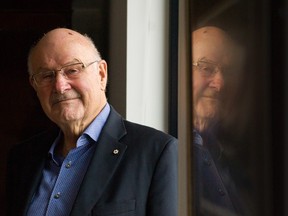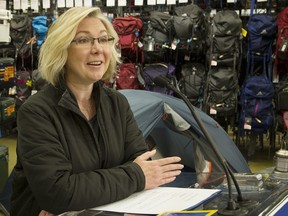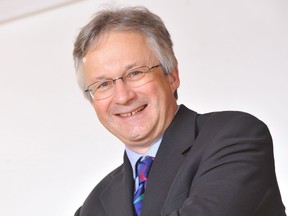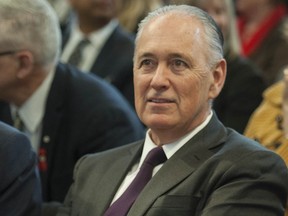Regional issues, gender balance, diversity and qualifications are all at play this week as Eby makes calls to all 46 of his incoming MLAs

Article content
Premier David Eby has tough choices to make in the coming days as he gets set to unveil his cabinet on Nov. 18.
Several people involved in picking past cabinets all say Eby must balance geographic and gender considerations following an election in which a record number of women were elected but the government lost considerable ground outside of the Lower Mainland and Vancouver Island.
Advertisement 2
Article content
The premier must also find MLAs to replace cabinet ministers who either retired before the election or were defeated.
Education Minister Rachna Singh, Resource Stewardship Minister Nathan Cullen and Agriculture Minister Pam Alexis lost re-election bids. Finance Minister Katrine Conroy, Labour Minister Harry Bains, Forests Minister Bruce Ralston, Transportation Minister Rob Fleming, Environment Minister George Heyman and Indigenous Relations Minister Murray Rankin are some of the big names to retire.
Nearly half of the 27 cabinet members Eby had before the election are not returning to government.
Glen Clark, NDP premier from 1996 to 1999, told Postmedia he’s concerned that Eby will struggle to give rural B.C. a voice because the party won only five seats outside the Lower Mainland and Vancouver Island. All 15 returning ministers are those two regions.
He said at least two or three of the five NDP MLAs outside the major urban centres will need to be given a role in cabinet. The five are Steve Morissette of Kootenay-Monashee, Harwinder Sandhu of Vernon-Lumby, Brittny Anderson of Kootenay Central, Tamara Davidson of North Coast-Haida Gwaii and Randene Neill of Powell River-Sunshine Coast.
Article content
Advertisement 3
Article content
“It is super important, I think, given the polarization of the province, that government and the premier go out of their way to try to ensure that people feel they’re represented,” said Clark, even if it leaves some strong MLAs from Vancouver on the backbench.
“You have won almost every seat in Vancouver, and let’s just say you thought they were all fantastic MLAs, all deserving to be in cabinet. You can’t put them all in because you need to represent the regional balance.”
Another consideration has to be the reduced size of the NDP majority, says another former NDP premier, Mike Harcourt. It gives Eby a smaller number of MLAs to work with.
Harcourt, who was premier from 1991 to 1996, said it will be important to place the experienced ministers in key portfolios such as finance, health, public safety and the attorney general’s office.
He cited Public Safety Minister Mike Farnworth as a prime example and believes Jobs Minister Brenda Bailey would make a “very capable finance minister.”

“I think it’s gonna be a smaller cabinet than the one that was put together before by Eby and John Horgan,” said Harcourt. “Consolidation is a good idea, and you don’t need to have 24 ministers in cabinet. It’s just my hunch that it’ll be a smaller cabinet of 19 people and the premier.
Advertisement 4
Article content
Harcourt said Eby has been “quite humbled and contrite” given his near defeat in the election and that the makeup of the cabinet, including whether there will be new ministries created, will reflect voter’s priorities of public safety, health care, the cost of living and education.
Clark and Harcourt said choosing a cabinet involves secret conversations with top aides and with each member of caucus to gauge their interests and whether they would be a good fit.
Clark said his process involved 20 different lists with the names of each potential cabinet member and the different portfolios.
“I do a quick draft with my staff. OK, here’s what I think, boom, boom, boom, and then you look at it and say, ‘Well, I don’t have enough women, or I don’t have enough regional representation,’ OK, well, unfortunately, this person is then dropped from this initial draft, because I want to try to better reflect the province.”

A former B.C. Liberal minister, Mary Polak, said all premiers handle cabinet choices differently but most go through similar steps. One is a call to each member of their caucus.
Advertisement 5
Article content
This week, Eby has spent a large portion of his time calling up each of his 46 MLAs, according to government staff and party insiders.
Polak said her conversations with Gordon Campbell and Christy Clark were primarily intended as a way for the then-premiers to get to know her and her interests.
“Every premier has a different way of doing this. Most of the time though, for all sorts of reasons, they keep it very, very close to their chest, as far as who they’re going to put where,” she said.
“They won’t say ‘Oh, I’m thinking of you for this or that.’ I don’t think any premier does that. I think what they do is ask, ‘what are you interested in? Tell me what you think you’d like to be doing,’ and they take that into account.”

Horgan’s former chief of staff, Geoff Meggs, said Horgan’s process in 2017 and again in 2020 was to tape photos of each caucus member to a wall in a private room and shift them around to different portfolios until he came up with a combination that addressed the different considerations he had around organizational structures, gender balance, diversity and regional representation.
Advertisement 6
Article content
Meggs agreed with both Clark and Harcourt that the electoral math and lack of regional representation make it more difficult to come up with perfect fits. The bigger task, however, will be shaping the cabinet to reflect key campaign promises.
“The political message of the election, whatever David Eby thinks that is, has to be reflected in the structure of the cabinet and who he picks to play the key role,” said Meggs.
“Case in point for this election, I think is the opioid crisis, and I will be watching to see not just how he tackles these very important commitments around involuntary care and improving treatment and those programs, but also the policing side, which came to the fore due to the standpoint of public order and decriminalization.”
Recommended from Editorial
Bookmark our website and support our journalism: Don’t miss the news you need to know — add VancouverSun.com and TheProvince.com to your bookmarks and sign up for our newsletters here.
You can also support our journalism by becoming a digital subscriber: For just $14 a month, you can get unlimited access to The Vancouver Sun, The Province, National Post and 13 other Canadian news sites. Support us by subscribing today: The Vancouver Sun | The Province.
Article content





Comments